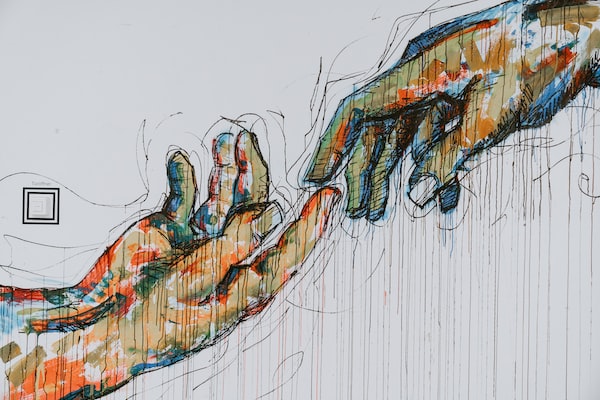Art has long been a realm where memory, identity, and myth converse. In her latest solo exhibition, The Sacred Wild, contemporary artist Aparna Banerjee invites viewers into a space where nature, architecture, and the feminine converge. Held at Bikaner House, New Delhi from October 10 to 14, 2025, The Sacred Wild is her meditation on endurance, mythology, and the quiet power of women.
This article delves deep into the background of Aparna Banerjee, the conceptual underpinnings of the exhibition, a guided walkthrough of key works and motifs, critical reception, and what this show means in the larger arc of her artistic journey.
Table of Contents
1. Artist Profile: Who Is Aparna Banerjee?
1.1 Early Life & Background
Aparna Banerjee hails from a culturally rich Bengali family, with early exposure to literature, art, and intellectual dialogue. While she cultivated a foundation in English literature (honours degree) and studied fashion design at IIFT and NIFT, her true calling remained in the visual arts.
Though self-taught in many respects, her multidisciplinary interests—architecture, museology, cultural heritage—inform her work’s visual language.
1.2 Artistic Journey & Exhibitions
Over the years, Banerjee has participated in more than 70 national and international exhibitions. Her works have been shown in the New York Art Expo, in China, Switzerland, and in Russia (Moscow, Yekaterinburg, St. Petersburg) via the National Gallery of Modern Art.
At the UNESCO Club’s “Athena” Art Fair in Greece, she was recognized for her expressive contributions. Her broader artistic practice encompasses painting (acrylics, watercolours), photography, mixed media, and even heritage-based workshops.
1.3 Themes & Signature Motifs
Banerjee’s art is often concerned with the concept of “Woman”—not as a static subject, but as force, resilience, and narrative. Her visual vocabulary fuses architecture (pillars, thresholds, arches) with nature (birds, lotus, deer), weaving stories that oscillate between memory, myth, and place.
Color, texture, layering, and architectural echoing are hallmarks of her approach—each brushstroke and hue is intentional, not decorative.
2. The Exhibition: The Sacred Wild
2.1 Concept & Curation
The Sacred Wild is curated by Shubho Sengupta and staged in the Kalamkaar Gallery (First Floor, Bikaner House, New Delhi) from 10 to 14 October, beginning daily from 11 am onward.
Banerjee describes the exhibition as a “constant return to the feminine”—not purely in form but in force and resonance. The show is rooted in her travels—across the Silk Route, southern India’s temple towns, and landscapes steeped in silence and endurance.
Architectural motifs—arches, pillars, doorways—are not mere backdrops but active participants, merging with botanical and animal imagery.
2.2 Artistic Media & Technique
The majority of works in The Sacred Wild are done in acrylic and watercolour. Banerjee layers textures, lets forms emerge and dissolve, and employs muted yet resonant color palettes—blues, earthy browns, ochres, subtle greens.
Symbolism is central—each element (flowers, deer, birds, architectural remnants) carries metaphorical weight.
2.3 Key Themes & Symbolic Imagery
2.3.1 Feminine Resilience & Voice
In many canvases, the feminine presence is felt through abstraction—veiled figures, peahens observing, forms merging with architecture. Banerjee emphasizes that women often “stand the test of time,” much like ancient pillars that remain even when facades erode.
2.3.2 Nature, Myth, and Memory
Recurring motifs include deer (musk deer / kastoori), lotus, wild blossoms, pomegranates, and a mystical creature, the Ganda Berundah (a two-headed bird in Indian myth) symbolizing conflict and harmony.
One piece, “Breath of Kastoori”, visualizes a deer seeking fragrance, unaware it emanates from within—an allegory for self-realization, particularly of women’s inner strength.
2.3.3 Architecture as Memory & Body
Banerjee’s use of arches, thresholds, carved pillars, and temple walls suggests that architecture itself holds stories. These forms are not passive; they become manifest embodiments of endurance, culture, and feminine memory.
2.3.4 Silence, Stillness, and Liminal Space
Many works explore silence—not absence, but presence. The images often hover at the boundary between being and non-being, inviting contemplation. Thresholds and doorways become visual metaphors for liminal states.
3. Walkthrough: Selected Artworks & Interpretations
Below is a guided walkthrough of some notable works (titles as known from press). Because the full catalog is not publicly listed, interpretations are based on interviews, reviews, and observed imagery.
3.1 Breath of Kastoori
This painting centers a deer in a dreamy landscape, reaching for scent, perhaps oblivious to its own role in creating it. It embodies the notion that strength, identity, and worth often lie within rather than in external validation.
3.2 Pillars, Doorways & Peahens
In several canvases, slim pillars rise, intertwined with flora that climbs and blooms. Peahens peek from behind arches—emblems of grace, watchfulness, and quiet dignity. Banerjee contrasts them with peacocks: “Peahens are explorers,” she notes.
3.3 Ganda Berundah (Two-Headed Bird Imagery)
This mythic bird with dual heads appears in a few compositions, resonating with the theme of conflict and harmony. It acts as a visual metaphor for duality: the internal and external, masculine and feminine, tension and reconciliation.
3.4 Lotus & Floral Cascades
Lotus—often seen in corners of her works—stands for purity, rebirth, and inner space. Wild blossoms bloom through stone and masonry, reminding one that life asserts itself even through decay.
3.5 Intersection of Memory & Travel
Banerjee’s own journey across the Silk Route and southern temple towns inform some landscapes: worn stone, carved temple walls, sun-bleached thresholds, and quiet pathways merge with flora and fauna in visual fusions of past and present.
Read More – Apra Makeovers & Academy: Premier Beauty Services and Professional Training in Delhi
4. Exhibition Reception & Critical Voices
4.1 Media & Critics
Local publications have observed how The Sacred Wild “weaves architecture, nature, and myth into a meditation on feminine strength.” The New Indian Express notes that Banerjee’s works adopt an “earthy, soft quality, never flashy,” with a carefully considered palette.
In Indulge Express, her architectural forms are said to echo feminine resilience: “serene, enduring, and radiant with quiet strength.”
4.2 Perspectives from the Artist
Banerjee describes art as her meditation—through it she explores memory, heritage, and feminine energy. She speaks of encountering women along her journeys whose strength, silence, and stories stayed with her.
She links architecture and womanhood, claiming that ancient arches and pillars “hold histories of endurance,” much like women who sustain families, traditions, and societies quietly.
She also explains that color choices—muted, meaningful—are not mere aesthetics but carry emotional, symbolic tones: bright yet softened, layered with intention.
4.3 Audience Response & Impact
Though this is a short run exhibition, early visitors reportedly stood in contemplation, absorbing the interplay of form, silence, and layered narratives. Many commented on the invitation toward inner reflection and the slow unfolding of symbolic relationships. (Anecdotal, from local arts coverage.)
Given Banerjee’s reputation and international visibility, The Sacred Wild adds another depth to her evolving oeuvre, reinforcing her commitment to narrative, space, and feminine resonance.
5. Contextual & Comparative Perspectives
5.1 Women, Myth & Indian Contemporary Art
Banerjee’s exploration of feminine force aligns her with a lineage of Indian artists engaging with gender, memory, and symbolism (e.g. Arpita Singh, Nalini Malani). While those artists may work in political, figurative, or performance registers, Banerjee’s voice is more interior, architectural, and mythic.
5.2 Memory, Travel & Diaspora
Her traversal of the Silk Route and southern India mirrors practices in contemporary art that negotiate between place, memory, and displacement. Though she is not a diaspora artist per se, her visual language evokes journeys—geographic, psychic, spiritual.
5.3 Architecture as Metaphor in Art
Using architectural elements in painting is a strong contemporary trend—thresholds, arches, ruins, walls become metaphors for identity, disappearance, and passage. Banerjee’s blend of stone and flora situates her work in that conversation, while focusing on female subjectivity.
6. Exhibition Logistics & Practical Details
Venue: Kalamkaar Gallery, First Floor, Bikaner House, Pandara Road, New Delhi
Dates: 10–14 October 2025
Timings: From 11 am onward (closing times as per gallery)
Entry: Typically free or by invitation (as with most gallery solo exhibitions)
Curator: Shubho Sengupta
Art Forms: Acrylics, watercolours, mixed media
If you’d like, I can compile a gallery of images with captions or a press kit summary for this exhibition.
7. Significance & Legacy
The Sacred Wild is more than a display of paintings—it is a reflection on inner geographies, feminine memory, and architectural echoes. For Banerjee, it marks a point of synthesis—her travels, her feminine concerns, her visual vocabulary coalescing into a coherent thematic show.
In her broader journey, this exhibition reinforces:
Her role as a storyteller, using layered visuals rather than literal narratives
Her commitment to exploring the feminine not as motif but as force
The way she bridges place, memory, and myth
Viewed over time, The Sacred Wild may well become a milestone—a show that crystallized her visual language for this chapter of her work.
FAQs
Q1. Who is Aparna Banerjee and what is her artistic background?
Aparna Banerjee is a contemporary Indian visual artist whose work spans painting, photography, and mixed media. Rooted in Bengali cultural sensibility, she draws on architecture, myth, memory, and feminine identity to create immersive visual narratives. She has exhibited internationally and participated in over 70 national and global shows.
Q2. What is The Sacred Wild exhibition about?
The Sacred Wild is a solo exhibition held in October 2025 at Bikaner House, New Delhi. It explores themes of nature, myth, memory, architecture, and feminine strength via acrylic and watercolour works. The show is rooted in Banerjee’s travels and her belief in the silent resilience of women.
Q3. What artistic media are featured?
Most works are in acrylics and watercolours, often layered and textural. Mixed media and symbolic motifs also play roles in the exhibition.
Q4. What are the major recurring symbols in the exhibition?
Some key motifs include lotus, deer (kastoori), birds (peahens, Ganda Berundah), architectural forms (arches, pillars, thresholds), wild blossoms, and pomegranates. Each holds metaphorical meaning—rebirth, presence, duality, memory.
Q5. Where and when is the exhibition taking place?
Venue: Kalamkaar Gallery, First Floor, Bikaner House, Pandara Road, New Delhi
Dates: 10–14 October 2025
Timings: Starting from 11 am onward daily
Curator: Shubho Sengupta
Q6. Why is the exhibition titled The Sacred Wild?
The title suggests a sacredness in wildness, in the untamed, in nature and in feminine strength. It signals respect for the natural world and inner wild landscapes—those parts of self, memory, myth that resist taming.
Q7. How does Banerjee connect architecture and feminine identity?
She sees stone, arches, pillars, and thresholds as silent witnesses to time, memory, and resilience—much like women who carry stories, traditions, and strength often without being seen. Architecture becomes metaphor, body, and memory in her canvases.
Q8. What kind of audience or response has the show received?
Though short-lived, the exhibition drew attention from art critics and local press, highlighting its contemplative nature, symbolic depth, and subtle color palette. Visitors are often drawn into slow observation and introspection.
Q9. How does The Sacred Wild fit within Aparna Banerjee overall oeuvre?
It consolidates many strands of her practice—travel inspiration, mythic symbolism, feminine narratives, architectural imagery—into a coherent thematic exhibition. It marks an evolution in her visual language toward deeper synthesis.
Q10. Can I view or purchase works from The Sacred Wild after the show?
That depends on the gallery’s post-exhibition arrangements. Some works may enter private collections or be available via the artist or gallery contacts. It’s best to inquire directly with the curator or the gallery.












